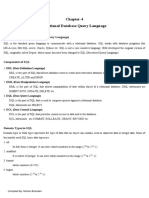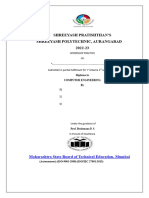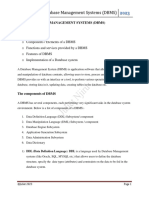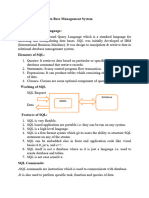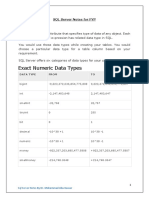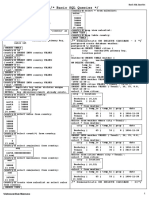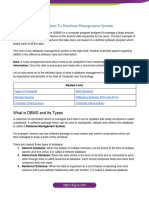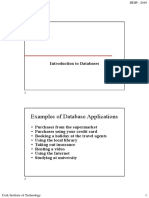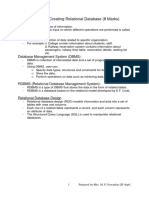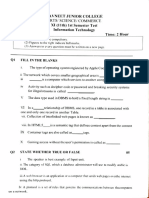0% found this document useful (0 votes)
21 views33 pagesDBMSFile 1
The Lab Manual of Database Management System (CSIT-405) for B. Tech. IV Semester includes a comprehensive list of SQL experiments covering various commands such as DDL, DML, DQL, DCL, and TCL, along with practical examples. It emphasizes the importance of SQL for database management and provides hands-on exercises to enhance students' skills in data manipulation and management. The manual serves as a foundational resource for students to understand and apply SQL in real-world scenarios.
Uploaded by
sg6227174Copyright
© © All Rights Reserved
We take content rights seriously. If you suspect this is your content, claim it here.
Available Formats
Download as PDF, TXT or read online on Scribd
0% found this document useful (0 votes)
21 views33 pagesDBMSFile 1
The Lab Manual of Database Management System (CSIT-405) for B. Tech. IV Semester includes a comprehensive list of SQL experiments covering various commands such as DDL, DML, DQL, DCL, and TCL, along with practical examples. It emphasizes the importance of SQL for database management and provides hands-on exercises to enhance students' skills in data manipulation and management. The manual serves as a foundational resource for students to understand and apply SQL in real-world scenarios.
Uploaded by
sg6227174Copyright
© © All Rights Reserved
We take content rights seriously. If you suspect this is your content, claim it here.
Available Formats
Download as PDF, TXT or read online on Scribd
/ 33

















